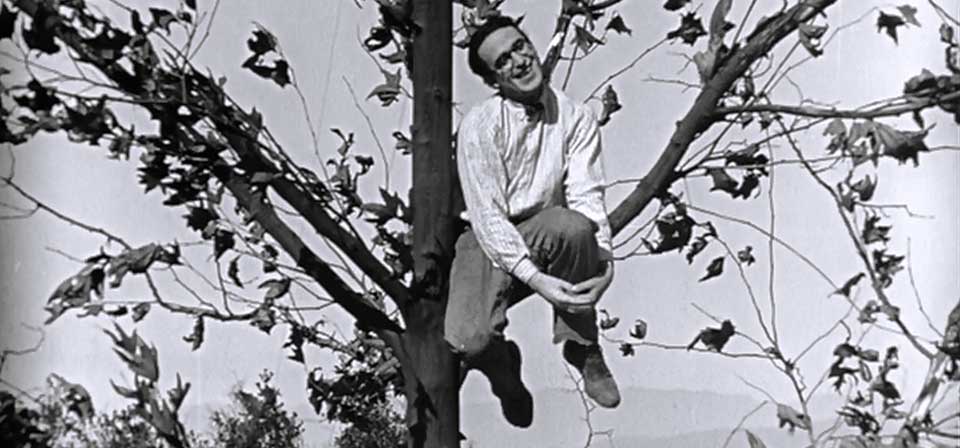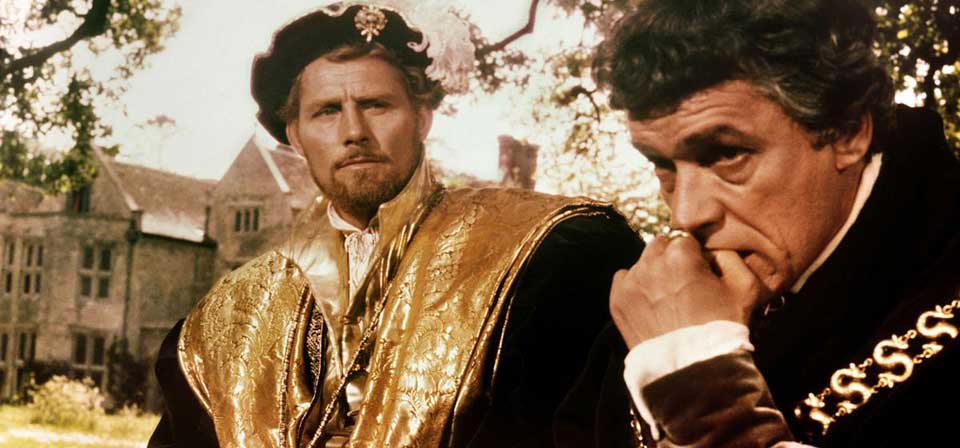Reviews
The Mark of Zorro (1920)
You haven’t seen Zorro until you’ve seen Douglas Fairbanks Sr. as Zorro in the 1920 silent swashbuckling classic.
The Mark of Zorro (1940)
Powers can’t match the original Zorro’s astonishing acrobatics and doesn’t try — but the rousing climactic duel against Basil Rathbone’s villainous Captain Esteban, one of the best swordfights ever filmed at that time, almost makes up for it.
Robin Hood (1922)
Silent action king Douglas Fairbanks Sr. is the most exuberantly athletic of Robin Hoods, for sheer physicality perhaps outdoing even Errol Flynn’s definitive performance.

The Kid Brother (1927)
As a first introduction to silent film, I would pick The Kid Brother over the best of Chaplin (Modern Times, City Lights) or Keaton (The General, Steamboat Bill, Jr.) every time.
The Big Sleep (1946)
The dialogue is hard-boiled and crackles with wit, the plot is fast-paced and nearly impenetrable, and Humphrey Bogart is coolly unflappable in Howard Hawkes’s stylish noir classic The Big Sleep, based on the Raymond Chandler novel.
Grave of the Fireflies (1988)
A haunting, harrowing war movie, an emotionally devastating character study, and an extraordinarily restrained example of animé or Japanese animation, Grave of the Fireflies is a unique and unforgettable masterpiece.
The Count of Monte Cristo (2002)
Like The Mask of Zorro, Monte Cristo balances its anachronistic sensibilities and over-the-top set pieces with genuine emotion and a real moral dimension — even, in Monte Cristo, a spiritual dimension. This is an action movie that’s also a morality play, a tale of injustice and vengeance that actually reckons on God, faith, and divine justice.
I’m Going Home (2001)
From nonagenarian writer-director Manoel de Oliveira, who’s been making movies for over seven decades, comes a sad, thoughtful character study of an aging French actor named Gilbert Valence (Michel Piccoli). On stage, in productions of Ionesco’s Exit the King and Shakespeare’s The Tempest, Valence gives impressive readings of the dramatic death-speeches of aged protagonists; but his own words in a key moment of frailty and finality, though equally haunting, are much more prosaic and anticlimactic.

A Man for All Seasons (1966)
The screenplay, well adapted by Robert Bolt from his own stage play, is fiercely intelligent, deeply affecting, resonant with verbal beauty and grace. Scofield, who for years starred in the stage play before making the film, gives an effortlessly rich and layered performance as Sir Thomas More, saint and martyr, the man whose determined silence spoke more forcefully than words, and who then spoke even more forcefully by breaking it.
Signs (2002)
Signs has the
heart that was lacking in Unbreakable, but stumbles badly
in its treatment of the paranormal, in this case the world of
"X-Files" / "Twilight Zone"
X2: X-Men United (2003)
Where other super-hero movies, like James Bond movies, take place in a static universe in which nothing really changes and the essential mythology remains the same, X2 is set in a world in flux. The plot is part of an ongoing story-arc reaching back to
It Happened One Night (1934)
She’s fleeing from her concerned father (Walter Connolly) and returning to the shiftless beau (Jameson Thomas) she married in a civil ceremony to spite her father (who had her whisked away from the service, so it’s not final legally or sacramentally).
Sabrina (1954)
The prologue, with its storybook-like, slightly arch voiceover narration finely read by Audrey Hepburn, suggests a charming fairy tale with a satiric subtext. And, indeed, Sabrina, Billy Wilder’s delightful romantic comedy starring Hepburn, Humphrey Bogart, and William Holden, is a sort of Cinderella story, with a chauffeur’s daughter who is transformed into the belle of the ball and dances with the prince — except that the "prince" is, if not a beast, at least a shallow cad, while the real love interest is almost more a frog than a prince.
Friendly Persuasion (1956)
Scenes of silent, unstructured Quaker meetings are contrasted without comment or judgment to the boisterous singing of the local Methodist church, but — despite Eliza’s best efforts — the film is largely an account of the compromises the Birdwells are and aren’t willing to make. Their principles are repeatedly put to the test, at the local fair, on the Sunday morning ride to the meeting house as a smug neighbor blows past Jess’s slow horse every week, and so on. One of the best vignettes concerns an impasse between Jess and Eliza over the shocking purchase of an organ, and the delightful way the conflict is finally resolved.
Bringing Up Baby (1942)
The zaniest, most delightful, most romantic screwball comedy of them all, Bringing Up Baby features Katherine Hepburn at her effervescent best and Cary Grant in a marvelous performance combining stuffiness and injured dignity with his usual debonair charm.
Secondhand Lions (2003)
In the end, though, Secondhand Lions is a pleasant and entertaining film that’s neither as demanding nor as satisfying as the superior Holes. The setup promises more early conflict than the first act delivers, and the story-arc doesn’t give the protagonist enough to do. Beyond that, the film gestures at moral lessons it never quite fleshes out or illustrates, and what ought to have been a key plot point is relegated to a tacked-on coda, depriving it of the crucial significance it should have had.

What’s Up, Doc? (1972)
Yet where Hepburn’s character was merely flighty, Judy Maxwell exists, like the Cat in the Hat and Bugs Bunny (note the title line and the carrots she munches in one scene), in the mode of the Trickster archetype, with inscrutable motives, capricious behavior, and almost preternatural abilities, capable of whimsically making Bannister’s life a living nightmare — or putting things to rights again at a moment’s notice.
Holes (2003)
Holes manages that rare trick of faithfully evoking what was special about the book without becoming slavish or by-the-numbers. Davis captures the book’s blend of coming-of-age realism, tongue-in-cheek grotesquerie, fantasy, and adventure, and capably navigates the plot’s multiple timelines and settlings.
The Guys (2003)
Unsurprisingly, the film is true to its theatrical roots: low-key, set mostly within the confines of an upper West Side apartment, centered on the conversation between the fire captain and the writer. In keeping with the minimal production values of the stage play, the film was shot in nine days on a limited budget. Dramatic 9/11 footage, flashbacks of the missing firefighters, even a romance between Nick and Joan were all proposed by Hollywood producers, but the filmmakers rightly sensed that anything like this would have been disastrous.
Matchstick Men (2003)
When his supply of meds unexpectedly dries up, Roy predictably disintegrates, much to Frank’s concern. Soon, though, Roy is seeing a psychiatrist (Bruce Altman, Changing Lanes), who not only provides the medication he needs, but gets him talking and thinking about his life — in particular the woman who walked out on him fourteen years ago, and whether or not she was pregnant at the time.
Recent
- Are there too many Jesus movies?
- Antidote to the digital revolution: Carlo Acutis: Roadmap to Reality
- “Not I, But God”: Interview with Carlo Acutis: Roadmap to Reality director Tim Moriarty
- Gunn’s Superman is silly and sincere, and that’s good. It could be smarter.
- Elio is a space adventure that Toy Story’s Andy would actually enjoy
Home Video
Copyright © 2000– Steven D. Greydanus. All rights reserved.